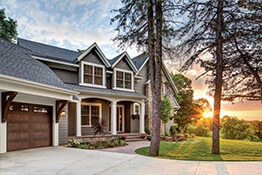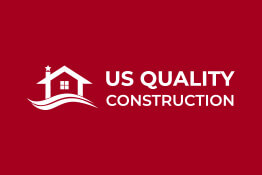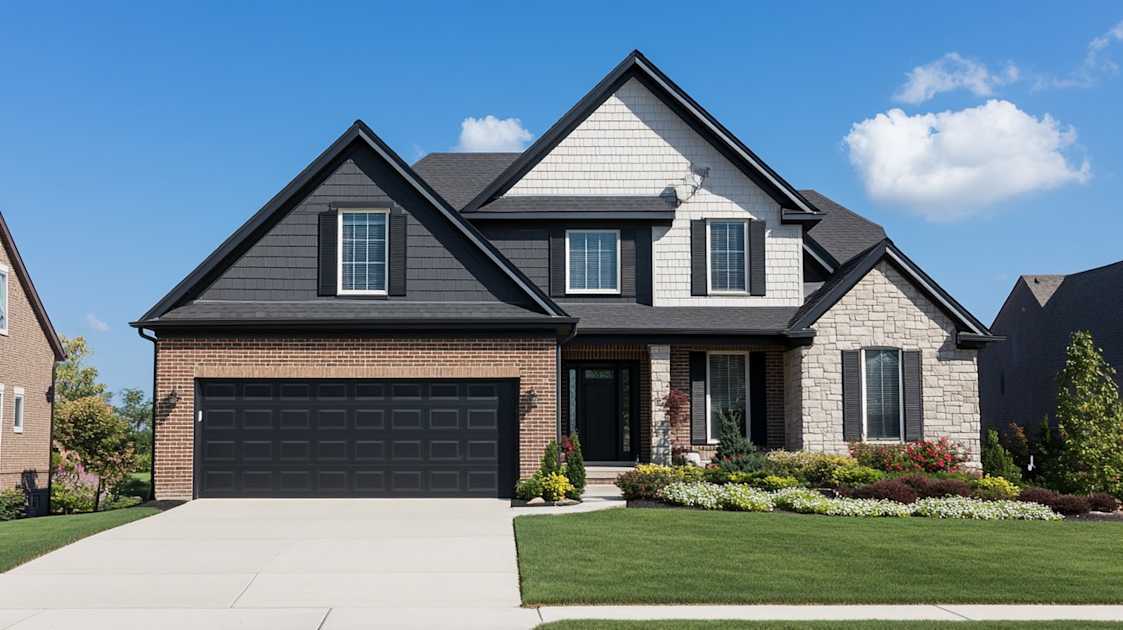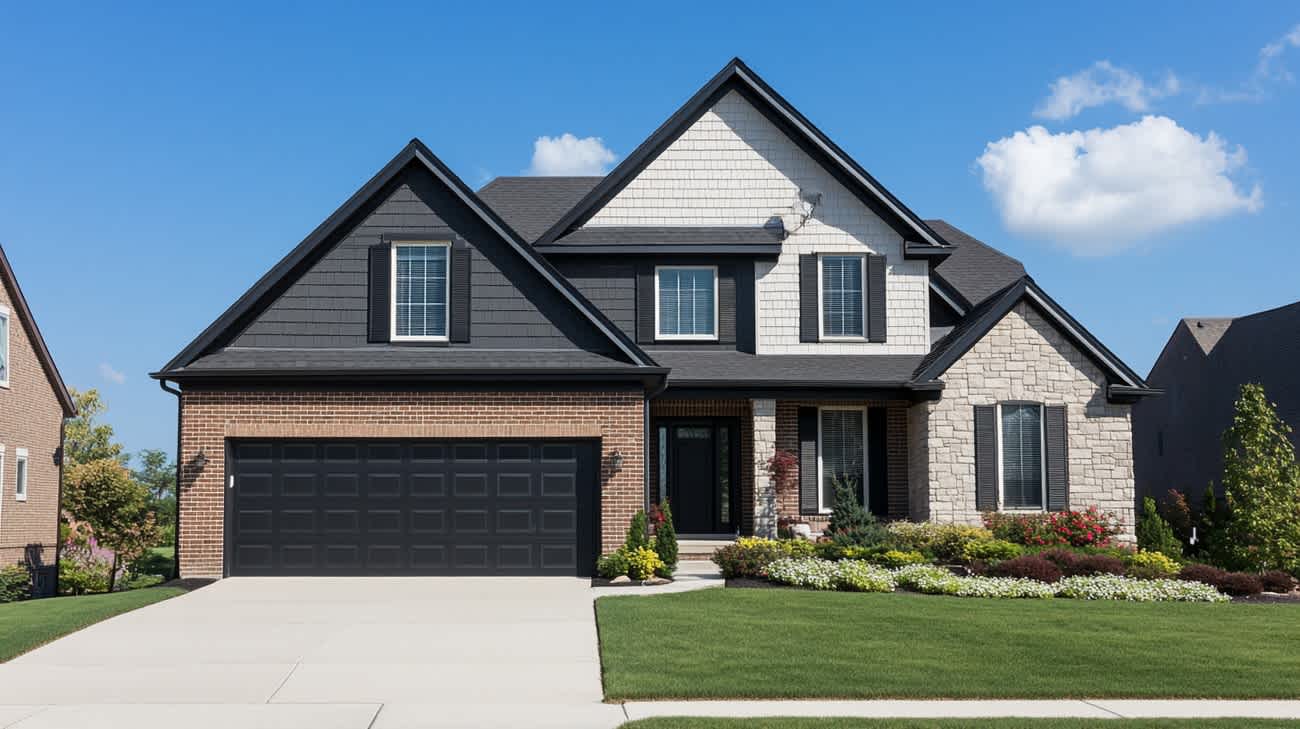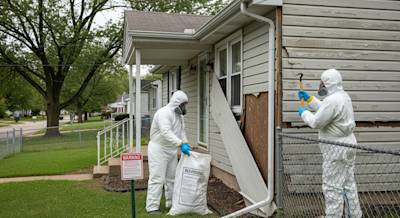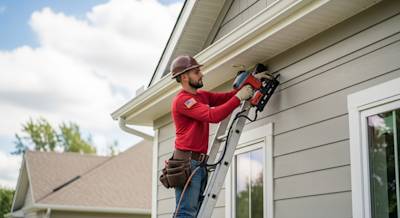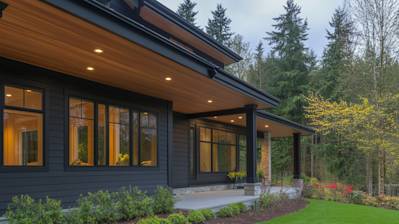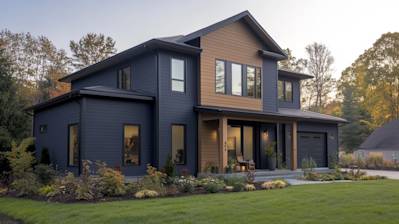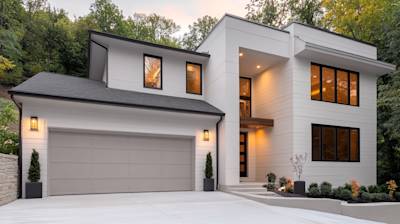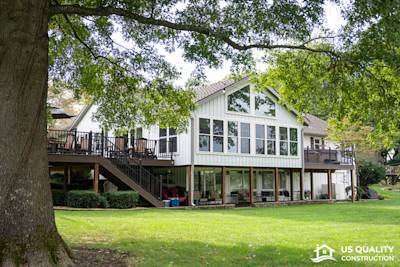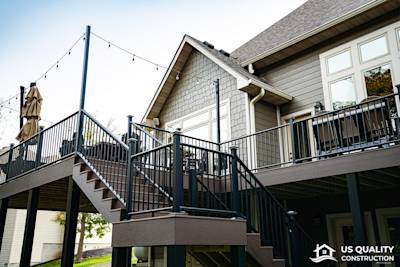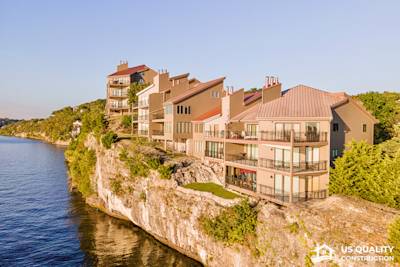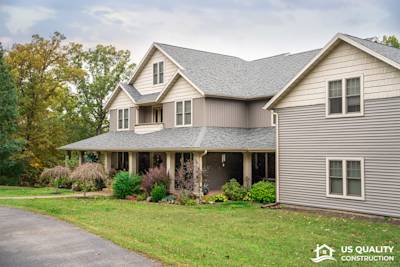Choosing your house siding style is a decision that significantly impacts the overall appearance of your home. It not only adds artistry and authenticity to your property but also directly influences its durability and the efficiency of your heating and cooling system. This blog post will comprehensively discuss various iconic house siding styles available in the market today.
Understanding House Siding Styles
House siding pertains to the exterior material applied to the walls of a house. It is designed for aesthetic appeal, protection against the elements, and insulation. Sidings come in an array of styles ranging from the conventional clapboard to the more elaborate log sidings. Here are some popular house siding styles:
- Clapboard Style
- Board and Batten Style
- Shake and Shingle Style
- Vertical Style
- Horizontal lap siding Style
- Log Style
The Classic Clapboard Style
Revered for its timeless elegance, the clapboard or horizontally laid siding style is an absolute classic. It’s commonly made of wood but can be crafted from vinyl, fiber cement, or aluminum. This style provides a smooth texture, creating a conventional yet stylish look for your house.
Board and Batten Style: The Rustic Charm
With its vertically layered boards and battens, this siding style radiates a rustic charm. The alternating wide and narrow vertical panels create a visually compelling pattern. Often used for barns and farmhouses, this style can add a countryside feel to any home.
Shake and Shingle Style: An Artistic Statement
This style is characterized by thin pieces of taper-split wood set in overlapping rows. Shakes are hand-split and give a rough-textured look, while shingles are machine-made and provide a smoother appearance. The shake and shingle style makes a brilliant artistic statement.
Vertical Style: Height and Presence
As the name implies, vertical siding is installed in an up-down direction which can create an illusion of height. This style is perfect for folks who want their house to have a strong, commanding presence.
The Resilient Horizontal Lap Siding Style
The horizontal lap siding style, also known as “Dutch lap,” is prominent for its durability. Here, long, even boards are overlapped to create a tight seal against climate changes. With its utility, aesthetics, and resilience, it's no wonder this siding style is a favorite for homeowners.
Log Style: A Nostalgic Touch
Log sidings provide the allure of a rustic log cabin without the need for a full log construction. An ultimate rustic design statement, this siding style brings out a vintage, nostalgic touch.
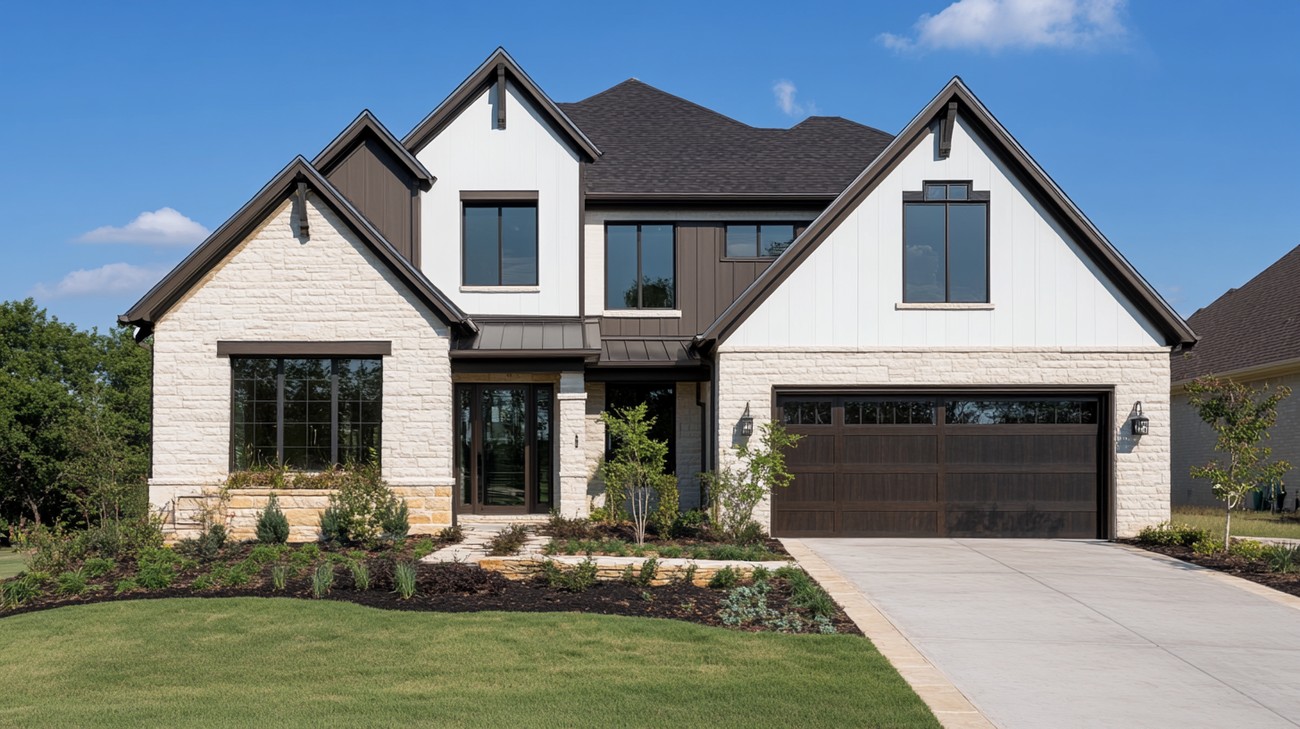
Frequently Asked Questions about House Siding Styles
How does horizontal lap siding style look?
Horizontal lap siding style is one of the most common house siding styles. As the name suggests, it consists of boards or planks that overlap each other horizontally. This style delivers a traditional and timeless look which works well with a wide range of house styles.
Can you describe the board and batten siding style?
Board and batten is a house siding style that presents a contrast between wide boards and narrow wooden strips called battens. The battens cover the gaps between the boards, creating a visually appealing pattern. The style is regularly used on country or cottage-style homes.
What is shingle siding style?
Shingle siding style, also known as shake siding, has been popular for centuries, particularly in coastal areas. This style involves thin, lightweight pieces of wood positioned in an overlapping pattern, just like on a roof. Shake siding tends to bring a bit of rustic charm to a house's exterior.
How about the vertical siding style?
Vertical siding is a style where the boards are installed vertically, projecting a modern and distinctive look. This house siding style is well-suited to taller houses or those seeking a more contemporary aesthetic.
What are the most commonly used materials for house siding?
House siding styles can be achieved using a variety of materials, including wooden boards, vinyl, metal, fiber cement, and even brick or stone. The choice of material can significantly influence the appearance and maintenance requirements of the siding.
How does the brick house siding style look?
Brick is a classic house siding style that offers a sense of permanence and tradition. It is recognized for its durability and timeless beauty. A brick siding style is often seen in Colonial, Tudor, or English cottage homes.
Is there a house siding style that resembles stone?
Yes, stone veneer siding mimics the look of natural stone but at a fraction of the cost. This house siding style provides a great deal of aesthetic flexibility. Stone veneer can be used to achieve a range of styles, from rustic to contemporary.
Can house siding styles be mixed?
Absolutely! Many homeowners mix and match different house siding styles to create a unique and fascinating exterior. For example, you can combine board and batten with horizontal lap siding, or incorporate sections of stone veneer with shingle siding.
How does weather influence the choice of a house siding style?
Different house siding styles can withstand different climate conditions. For example, brick and stone are both excellent choices for areas with harsh weather because of their strength and durability. On the other hand, wood and vinyl siding are better suited for regions with moderate climates.
How do house siding styles affect home values?
House siding styles can have a significant effect on the perceived value of a property. An attractive, well-maintained siding can greatly enhance the curb appeal of a house, potentially attracting more buyers and driving up the sale price. Conversely, a house with damaged or outdated siding may appeal less to potential buyers.
How often should house siding styles be updated?
This largely depends on the material of the siding and your regional weather conditions. Some materials, like brick or stone, can last for many decades with minimal maintenance. Others, like wood, might need more frequent attention. A general rule is to consider an update when the siding begins to show signs of wear like chipping or peeling paint, or if there are frequent needs for repairs.

Pros of Various House Siding Styles
1. Vinyl Siding
Appearance
Vinyl siding comes in a variety of colors and textures, making it a versatile choice for homeowners. It can even mimic the appearance of other materials, like wood, without the upkeep required for those materials.
Cost
Vinyl siding is known for being a fairly affordable option. Its low cost paired with its durability and low maintenance makes this style a popular choice for many homeowners.
Maintenance
One of the major advantages of vinyl siding is how easy it is to care for. It can go years without needing any major upkeep beyond basic cleaning.
2. Wood Siding
Enhances Architectural Style
Wood siding is traditional and brings a touch of classic charm to any home. It greatly enhances architectural styles such as Cape Cod, Craftsman, and Bungalow homes.
Customizable
Wood can be stained or painted to any color, making it a highly customizable option. The species of wood you choose can also dramatically change the look of your house.
Environmental Impact
Wood is a natural material and can be sustainably sourced. It's also biodegradable at the end of its lifespan.
3. Brick Siding
Long Lifespan
Brick is an exceptionally long-lasting material and is resistant to fire and termite damage. It even can withstand high winds and hail.
Adds Value
Brick siding is often perceived as high-quality by potential buyers, meaning it can boost your home's resale value.
Insulative Properties
Brick is a good insulator, keeping homes warmer in the winter and cooler in the summer, which can save on utility costs.
Cons of Various House Siding Styles
1. Vinyl Siding
Durability
While vinyl is reasonably durable, it isn't indestructible. It can become brittle and crack in cold weather, and it can warp in high heat.
Cannot Be Painted
Vinyl siding does not take well to being painted, so you're generally stuck with the color you initially choose for the life of the siding.
2. Wood Siding
Maintenance
Wood siding requires fairly regular maintenance, including painting or staining every few years. Without proper upkeep, wood can warp, chip, rot, or become susceptible to insect damage.
Cost
Among popular siding options, wood is one of the most expensive. The cost of the material itself is substantial, and the maintenance costs can add up over time.
3. Brick Siding
Cost
Brick is one of the most expensive siding options. Installation requires a skilled tradesman and it can be costly to repair if damaged.
Limited Color Options
Brick is not as easily customizable as some other siding options. While it can be painted, doing so removes one of its big benefits: its maintenance-free nature.

Myths and Misconceptions about House Siding Styles
When it comes to house siding styles, there's a lot of information out there. Some of it is useful and based on solid facts, but there are also a lot of myths and misconceptions floating around. Let's set the record straight on some of the most common misconceptions about house siding styles.
Myth 1: All Siding Styles Are Created Equal
Misconception: All types of siding provide the same benefits.
A common misconception about siding is that all types - be they vinyl, metal, wood, or fiber cement - offer the same benefits and visuals. In fact, different styles of siding have different advantages and disadvantages. For example, vinyl siding is popular because it's low-maintenance and cost-effective, but it may not offer the same aesthetic appeal as wood siding, which has a classic, timeless appeal but requires more ongoing maintenance.
Myth 2: Vinyl Siding Is Cheap and Unattractive
Misconception: Vinyl siding is a cheap, lesser alternative to other materials.
Contrary to popular belief, modern vinyl siding is much more than a cheap plastic exterior for your home. It's now available in a wide range of styles, colors, and textures, including options that mimic the look of wood, stone, or brick. Additionally, vinyl siding does not rot and requires less maintenance than many other siding styles, making it an economical choice for many homeowners.
Myth 3: Wood Siding Always Requires High Maintenance
Misconception: Wood siding requires constant, costly upkeep.
While it's true that wood siding requires regular maintenance to keep it at its best, this doesn't necessarily mean high, ongoing costs. In fact, with timely care and attention, wood siding can last for decades and add a high degree of aesthetic appeal to your home. It's also worth considering that many types of maintenance, such as painting or sealing, could be DIY jobs, potentially saving you money.
Myth 4: Stucco Is Only Suitable for Mediterranean or Spanish Style Homes
Misconception: Stucco siding is only for certain architectural styles.
Stucco is extremely versatile and can be used on a variety of architectural styles, not just Mediterranean or Spanish designs. From modern to colonial, stucco can offer a unique and appealing look. Moreover, apart from its aesthetic versatility, stucco is also durable, fire-resistant, and a good insulator against noise and weather.
Myth 5: Fiber Cement Siding Is Too Modern
Misconception: Fiber cement siding has a modern look that doesn't fit traditional homes.
While fiber cement siding is a relatively new addition to the market, its design versatility means it can complement virtually any type of home, from traditional to contemporary. Available designs can mimic the look of wood, stone, or brick, and they can come in almost any color. Beyond aesthetics, fiber cement siding is also loved for its durability and relative ease of maintenance.
Myth 6: Metal Siding Is Only for Industrial Buildings
Misconception: Metal siding is solely for commercial or industrial use.
While it is true that metal siding is often used on commercial or industrial properties, it can also be a stylish and practical option for residential properties. Depending on the design, metal siding can offer a sleek, modern look or a rustic, weathered appearance. Additionally, metal siding can withstand severe weather, is fire-resistant, and is impervious to pests.
Myth 7: All Siding Styles Are Energy-Efficient
Misconception: Any siding style improves the home's energy efficiency.
Not all siding styles are made equal when it comes to energy efficiency. Some, like insulated vinyl or fiber cement, provide better insulation and can help keep your home cooler in the summer and warmer in the winter. Others, like certain types of wood or metal siding, might not offer the same energy-saving benefits without extra insulation.
Remember, understanding the facts about different siding styles can help you make the best decision for your home based on your specific needs, tastes, and budget. Always do your own research or consult a professional to ensure you're not basing your decision on misconceptions.
Summary
So, folks, we've now journeyed through the wonderful world of house siding styles, understanding their significance and how they can completely transform the look of a house. We've learned that house siding styles are not just about appearances but also about functionality and durability. With the right choice, you can enhance your home's curb appeal and increase its value, all while ensuring long-term protection against the elements.
Remember, choosing the right house siding style doesn't have to be confusing. It's all about understanding what each style offers and how well it aligns with your taste and lifestyle. Plus, take into account the climate and overall architectural design of your home before making a decision. From traditional clapboard to modern fiber-cement, house siding styles can add that much-needed character and charm to your dwelling.
To wrap it up, house siding styles are an essential part of home design that should never be overlooked. So whether you're planning a home renovation or working on an entirely new construction, keep siding styles as one of your top priorities. After all, your house is not just a structure; it's an expression of your personality and a place that tells your story. Choose wisely and happy house styling!
About US Quality Construction
At US Quality Construction, we've been proudly serving Kansas City, MO, and the surrounding communities, providing top-notch construction services. As a local, family-owned company, we bring over a decade of experience in crafting beautiful, durable, and high-quality structures. Our team of experts is dedicated to making your vision a reality, whether it's building your dream house, remodeling your existing home, or upgrading commercial spaces. We are more than a construction company, we're a partner who's committed to delivering projects on time, within budget, and beyond your expectations. Welcome to US Quality Construction, where quality is much more than just our name, it's our promise.
Tags: vinyl siding, wood siding, modern siding,
